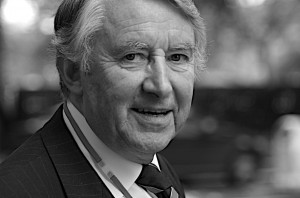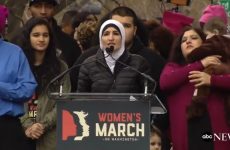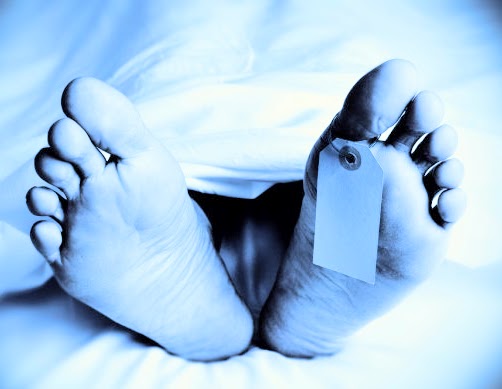 Many people believe abortion was legalized because of thousands of backstreet abortions, leading to the tragic deaths of women; that the abortion campaign was part of the feminist movement; that the 1967 Abortion Act was the work of radicals who wanted to help poor overburdened mothers. None of this is true. Here we look at the reality behind the myths.
Many people believe abortion was legalized because of thousands of backstreet abortions, leading to the tragic deaths of women; that the abortion campaign was part of the feminist movement; that the 1967 Abortion Act was the work of radicals who wanted to help poor overburdened mothers. None of this is true. Here we look at the reality behind the myths.
Backstreet Abortion
The Abortion Law Reform Association (ALRA) formed in 1936; it convinced the Birkett Enquiry into illegal abortion (1938) of huge numbers of secret backstreet abortions, although many were carried out in thinly disguised nursing homes. In the 1950s ALRA claimed at least 200,000 illegal abortions in England and Wales. Such guesstimates were rejected by the Royal College of Obstetricians and Gynaecologists, which in 1966 condemned campaigners inflated figures and estimated 14,600 a year. The unsterile conditions of backstreet abortion meant it could not be kept secret, as campaigners claimed; neither could abortion deaths be concealed. Police vigilance kept illegal abortionists on the move; rather than the kind-hearted woman helping her neighbours, as in the film Vera Drake (2004) it was the work of misfits and criminal gangs involved in prostitution. The working classes especially deeply disapproved of abortion; sex outside of marriage was frowned upon; out-of-wedlock pregnancies mostly ended in marriage; most abortions involved women in irregular relationships; indeed, some campaigners admitted the problem was respectable women NOT seeking abortion; some saw the backstreet abortionist as providing a useful service to humanity in aborting the offspring of the unfit and reducing the surplus population. While the Birkett Committee deliberated, Aleck Bourne, an ALRA member seeking a test case on abortion (he later joined SPUC) operated on a fourteen-year-old rape victim referred by a fellow ALRA member. Abortion was already legal to save the mothers life, but the outcome of Bournes prosecution meant doctors were protected if they believed the pregnancy would make a woman a physical or mental wreck. This opened a large loophole in the law because it took into account the mothers quality of life; however, most people held the Christian view of abortion as the destruction of innocent life; apart from dedicated eugenicists like Professor Dugald Baird of Aberdeen, few doctors were prepared to perform abortions. By the 1960s contraceptives were more prevalent and out-of-wedlock pregnancies increased; in 1967, 9,670 therapeutic abortions were carried out in hospitals, some because of incomplete abortion. However, in 1969, after legalisation, numbers leapt to nearly 50,000 in England and Wales. Not until 1972 did legal abortions pass the 100,000 mark, but the myth of huge numbers of invisible illegal abortions before the Act explained the huge numbers of legal abortions after. Moreover, a steep rise in sexually transmitted diseases suggested that the Abortion Act not only led to more sex outside marriage, but that young women were more likely to abort an illegitimate pregnancy. Abortion advocates set up clinics to take advantage of the Act, which drew in thousands of foreign women and led to legalization worldwide in a domino effect. Explicit sex education focussing on abortion has kept figures high, because despite an abortion-led birth slump, girls are sexually active at a much younger age and now have several abortions. This strengthens the myth that if abortion were no longer legal there would be huge numbers of backstreet abortions. Tragically, abortion advocates now campaign for women to be allowed chemical abortions in their own homes, despite the dangers.
A Feminist Campaign?
Throughout its history the abortion campaign was shunned by feminists. ALRA, although all-women, had many male advisors, supporters and allies, but all were members of the eugenics and population control movement. The Eugenics Society, founded by Sybil Gotto, attracted middle-class, humanist women; the abortion campaign, like the campaigns for birth control, sterilization and divorce, was an offshoot of the Eugenics Society, but while the euthanasia campaign was fronted by men, the abortion campaign was fronted by women. After the Abortion Act huge numbers of abortions led to calls for restrictions; advocates responded with ‘a woman’s right to choose’, steering the new feminist movement of the 1970s to support abortion. In the process they killed off feminism, itself a reaction to the abuses suffered by women in the sexual revolution, with its emphasis on ‘free love’. Abortion advocates subsequently re-wrote the history of their campaign to emphasize it as feminist. In contrast, the early feminists realized that women’s rights did not conflict with the rights of the unborn: both suffer from abortion.
A Radical Campaign?
Abortion campaign historians point to its left wing supporters, but like right wing advocates they were largely humanists who supported eugenics and population control. The Victorian Neo-Malthusian movement, funded by the wealthy Drysdale family, believed in the small Malthusian family and warned of overpopulation if the poor were allowed to have too many children; they believed that people who practised fertility control showed they had evolved to a higher level. Eugenicists wanted more children from the fit (i.e. wealthy) and fewer from the unfit (i.e. poor). By the 1930s the two movements had moved closer together; the eugenicists realized that wealthy people were not going to have bigger families, and after the War began to campaign for the small family, to prevent the poor from out-breeding the rich. ALRAs founder Alice Jenkins saw abortion as the lesser of two evils the greater evil being children; her co-founder Janet Chance wanted compulsory abortion for the degenerate. Marie Stopes of the Society for Constructive Birth Control and Racial Progress advocated contraception to prevent abortion, while discreetly referring women for abortion. Abortion campaigners, as members of the Eugenics Society, supported all fertility control measures, including sterilization, in order to regulate the quantity and quality of the population; however, most publicly identified with only one campaign.
Poor Overburdened Mothers?
In the 1960s the abortion campaign switched its focus from the unfit mother to mothers who couldn’t cope – from the eugenic quality of the offspring of the poor to the plight of the unwanted children of the disadvantaged. Alice Jenkins coined the slogan law for the rich, suggesting that only the wealthy could afford a safe abortion, but many poor people saw abortion as a sign of the degeneracy of the rich. The campaigns founders were wealthy women, and the 1960s campaign notably lacked poor members; however, it was generously funded by the American Hopkins Donation Fund for poorly supported and pioneering causes; the Fund also guided the publicity campaign. Advocates claimed abortion was the solution to delinquency, illegitimacy and disability, thus it would save society money; but they also believed the human race could be purified by removing its inferior elements; also that people helping the disabled could be better employed elsewhere although, doubtless, their unemployment would show that they, too, were surplus to requirements. These were the ideas that inspired the Nazi euthanasia programme, but after the Second World War, in which millions perished, some abortion supporters believed the British population should be cut to a few millions; the international family planning movement was founded in London by campaigners who feared that non-whites would out-breed whites. The British Abortion Act allowed abortion to be exported to poor countries, and a disproportionate number of abortions are carried out on non-white Britons. The Abortion Act included a specific clause on disability; the Human Fertilization and Embryology Act (1990) reduced the upper limit for abortion from 28 to 24 weeks, but in excluding disability, legalized abortion up to birth for disabled foetuses. Instead of helping parents to care for affected children, and encouraging society to value diversity, public resources have been devoted to detecting disabled foetuses and steering parents to abort them in a process of search and destroy. As a result, the public has become more critical of parents deciding not to abort disabled children, and this increased negativity to disability is now influencing public support for assisted suicide for the disabled, reflecting the eugenics view of disability as a burden on society.
Abortion: Problem or Solution?
We now face a growing number of problems from abortion: millions of dead unborn babies, damaged women, families and relationships. Abortion was supposed to solve human problems, but killing problem humans, while leading to a birth slump that has proved economically disastrous, has also created even more of the social problems it was claimed to solve, because it destroys the most basic human bond that of mother and child. In inventing the planned pregnancy, fertility campaigners also invented the unplanned pregnancy, leading to more and more crisis pregnancies solved by more and more abortions. Marie Stopess slogan every child a wanted child has led to even more unwanted children. Legalizing abortion has legalized injustice in our country and throughout the world, destroying lives, health and happiness; but before this injustice can be destroyed we must first destroy the myths surrounding the history of abortion.








Comments